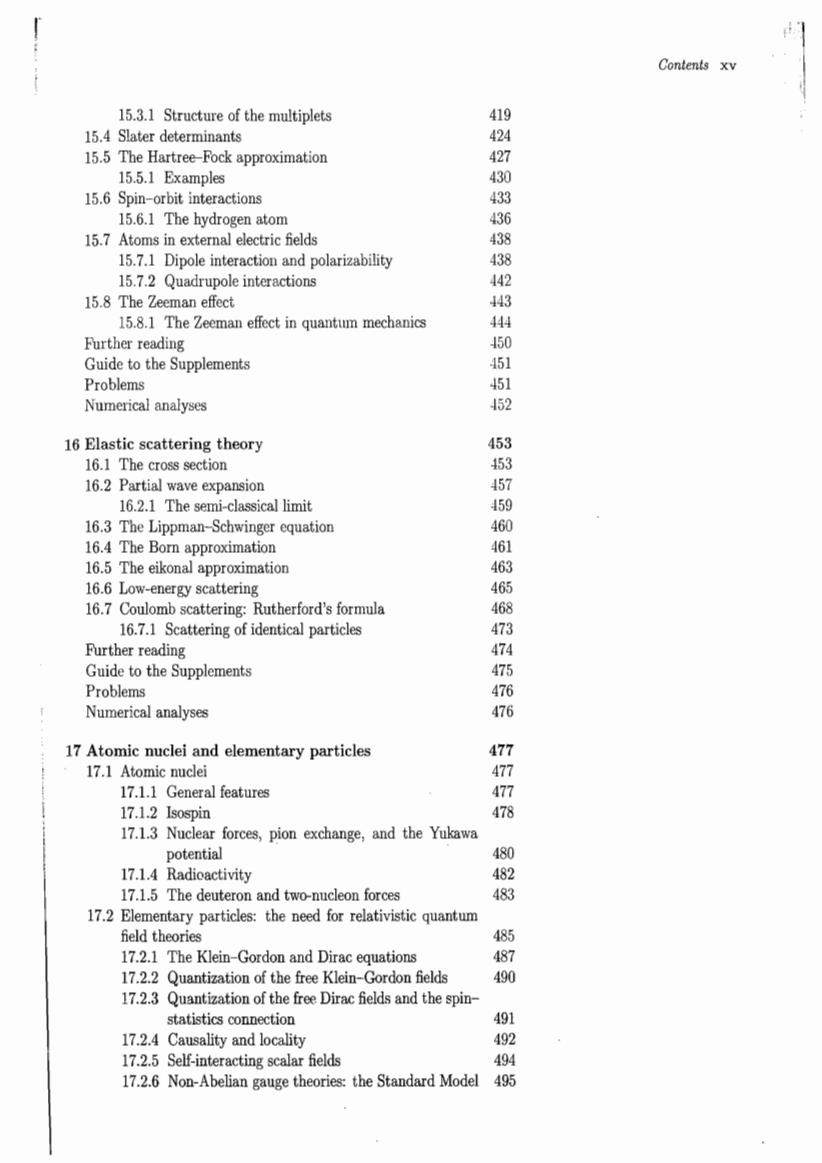正在加载图片...

| Contents x 15.3.1 Structure of the multiplets 15.4 Slater determinants 15.5 The Hartree-Fock approximation 15.5.1 Examples 15.6 Spin-orbit interactions 433 15.6.1 The hydrogen atom 436 15.7 Atoms in external electric fields 438 15.7.1 Dipole interaction and polarizability 438 15.7.2 Quadrupole interactions 442 15.8 The Zeo an effect 443 15.8.1 The Zeeman effect in quantum mechanics Guide to the Supplements Problems Numerical analyses 16 Elastic scattering theory 16.1 The cross section 16.2 Partial wave expansion 57 16.2.1 The semi-classical limit 5 16.3 The Lippman-Schwinger cquation 16.4 The Born approximation 461 16.5 The eikonal approximation 3 166o 465 erinRutherford's formul ng Guide to the Supplements Problems Numerical analyses 17 Atomic nuclei and elementary particles 477 17.1 Atomic nuclei 17.1.1 General features 477 17.1.21s0spin 17.1.3 Nuclear forces,pion exchange,and the Yukawa potential 17.1.4 Radicactivity 171 5 The deute and two-c forces 17.2 Eler for relativistic quantum 485 The Klein-Gordon and Dirac equations 17.2.2 Quantization of the free Klein-Gordon fields 17.2.3 Quantization of the free Dirac fields and the spin- statistics connection 491 17.2.4 Causality and locality 492 17.2.5 Self-interacting scalar fields 494 17.2.6 Non-Abelian gauge theories:the Standard Model 495